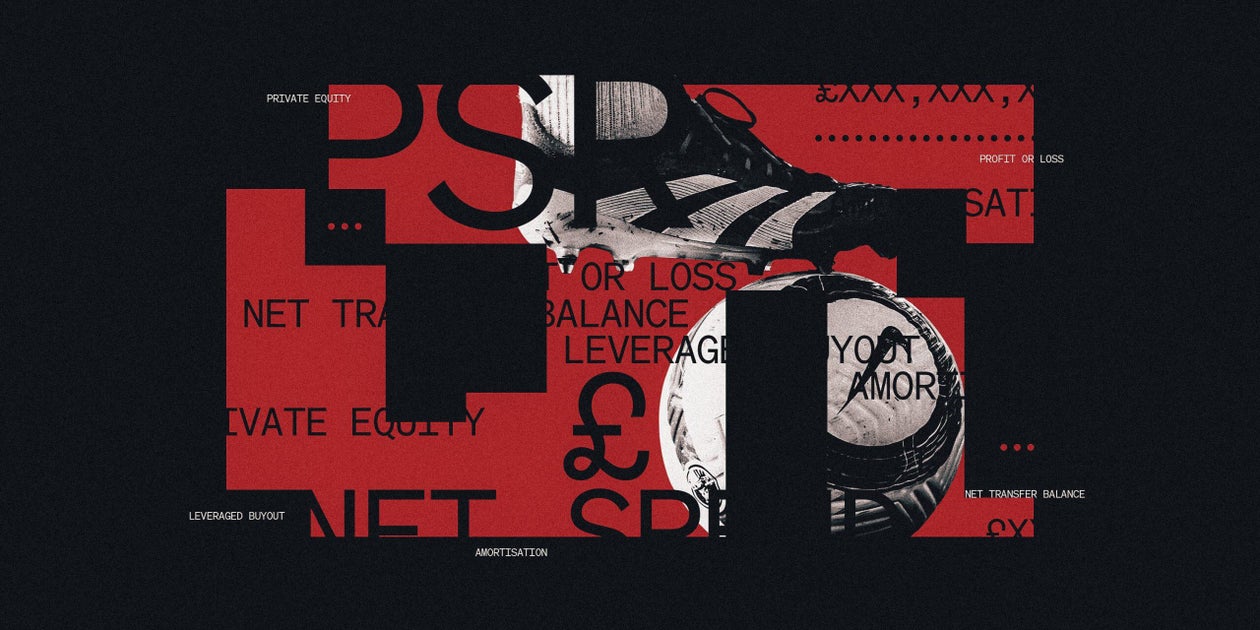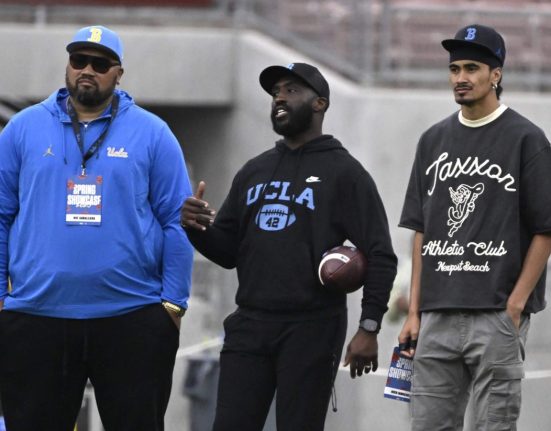The Athletic has appointed Chris Weatherspoon as its first dedicated football finance writer. Chris is a chartered accountant who will be using his professional acumen as The BookKeeper to explore the money behind the game. He is starting with a series this week analysing the financial health of some of the Premier League’s biggest clubs.
You can learn more about Chris and pitch him your ideas here, and read his first articles exploring the books at Manchester United, Manchester City, Arsenal and Liverpool.
One of The Athletic’s ambitions in hiring Chris is to help every football fan understand as clearly as possible the financial complexities of the modern game. To help with that, the BookKeeper’s glossary is here to explain some of the terms you’re likely to see most often. Let us know any you would like us to add.
- Agent fees
- Costs incurred by clubs through use of intermediaries, generally in the buying and selling of players and the signing of contract extensions.
- Agent fees are not included in club wage bills and instead form part of a club’s player and football staff registration figure (see: ‘Squad cost’) in the accounts of UK-based clubs (different treatments are applied elsewhere).
- Allowable expenditure
- Usually used in the context of Profit and Sustainability Rules (see: ‘PSR’), these are deemed ‘good’ expenditure by governing bodies and are deductible from a club’s pre-tax result in arriving at a PSR profit or loss figure.
- See also: ‘Deductions’.
- Amortisation
- Similar to depreciation, comprises the writing down of asset values across their useful life, specifically in relation to intangible assets (under which player registration costs fall).
- For football clubs, this primarily relates to player registration costs (see: ‘Player amortisation’), though clubs do often hold other intangible assets too.
- Arm’s length
- A transaction in which the buying and selling parties act independently of one another, with neither party influencing the other.
- Balance sheet
- A statement of a club’s assets, liabilities and capital at a given date (see ‘Period end’ and ‘Year end’).
- Break cost
- The expenditure incurred by a club repaying borrowing facilities before the agreed term date, ostensibly to compensate lenders for lost future interest payments.
- Capex
- Shortened version of capital expenditure, often used interchangeably with capital investment or fixed asset investment. Comprises spend on infrastructure and facilities (e.g. stadium builds, training ground improvements).
- Note: a club’s capital expenditure per its balance sheet can differ from the amounts paid out in cash per the cash-flow statement. Unless otherwise stated, we will refer to the latter.
- Deductions
- See: ‘Allowable expenditure’.
- Depreciation
- Comprises the writing down of fixed asset values across their useful life.
- EBITDA
- Earnings before interest, tax, depreciation and amortisation.
- Exceptional item(s)
- One-off, non-recurring items that are separated in a club’s profit or loss statement to identify them as unusual transactions (e.g. owner loan write-offs).
- Note: club treatment here is inconsistent.
- Equity injection
- Cash funding in the form of purchasing new shares — i.e. not debt/loan funding — and increasing a club’s capital.
- Football net debt
- A club’s gross financial debt minus its cash and cash equivalents balance, plus or minus its net transfer balance.
- Free Cash Flow (FCF)
- A measure determining a club’s cash generation after capital expenditures required to maintain a club’s asset base.
- There are varying FCF definitions – The Athletic’s use of FCF comprises a club’s operating cash flow, less cash expense on capital items including infrastructure and player purchases, plus cash receipts on fixed asset or player sales, plus or minus net cash interest payments.
- Headroom
- Usually used in the context of Profit and Sustainability Rules (see: ‘PSR’), this term is used to refer to how much extra money a club could lose without breaching their respective loss limit.
- In almost all cases, PSR headroom in our articles is an estimate.
- Impairment
- Most often used by clubs in respect of player registration amounts. Comprises a reduction in the value of an asset, based upon a change in circumstances and carried out to ensure an asset value is not higher than the amount said club could reasonably expect to recover from it in an arm’s-length transaction.
- Leveraged buyout (LBO)
- The acquisition of a club using primarily borrowed money, with the assets of that company (the ‘target’) used as collateral against the borrowed money.
- Net debt
- A club’s gross financial debt minus its cash and cash equivalents balance.
- Net profit or loss
- Another name for pre-tax profit or loss.
- Net spend
- Comprises a club’s gross spend on player additions per their balance sheet, less gross player sales per their balance sheet and profit on player sales.
- Net transfer balance
- The net amount a club is owed from, or owes to, other clubs in respect of outstanding transfer fee payments.
- See also: ‘Transfer creditors/payables’ and ‘Transfer debtors/receivables’.
- Operating profit or loss
- A club’s financial result before the impact of player sales, any ‘Exceptional item(s)’, or the impact of net interest costs or tax.
- Period end
- Sometimes used interchangeably with ‘Year end’, though the two are not always synonymous. Clubs occasionally shorten or lengthen their accounting end dates, meaning the most recently published financials might not cover a 12-month period.
- Player amortisation
- Comprises the writing down of player registration costs over the length of that player’s contract.
- For example: Player A signs for Club X for £50million on a five-year contract. The annual hit to Club X’s profit or loss statement is £10m, being initial cost of £50m divided by five years.
- Private equity
- Medium- to long-term financing provided to companies not publicly traded, with a view to the investors making a gain on investment upon ‘exit’.
- Profit on player sale(s)
- The accounting profit (or loss) recorded upon a player’s registration being transferred to another club. Comprises the fee received by the club for the player, less that player’s accounting value at the date of sale.
- For example: Player A signs for Club X for £50m on a five-year contract, so the annual amortisation cost is £10m (£50m divided by five years). After exactly two years at the club, Player A is sold to Club Y for £40m. The player’s accounting value at that time is £30m, being the original £50m written down by two years of £10m annual amortisation. The profit on player sale is therefore £10m, being the £40m sales price less accounting value of £30m.
- Profit or loss
- Unless otherwise stated, The Athletic refers to club’s profits or losses on a pre-tax basis. Most clubs pay little or no corporation tax – using pre-tax loss allows for greater comparability.
- PSR
- Stands for Profit and Sustainability Rules: industry-specific regulations designed to encourage good financial practice among clubs.
- Different governing bodies might have different PSR guidelines (e.g. UEFA and the Premier League).
- Revolving Credit Facility (RCF)
- A short-term form of debt financing that affords clubs flexibility to…
- Secure funding
- Usually used in relation to PSR, this is funding not in the form of a loan that comprises either a contribution from an equity participant (e.g. a shareholder), or an irrecoverable commitment from an equity participant to provide such funding in the future, confirmed by a legally binding agreement between the participant and the club.
- Squad cost
- The total cost of player and football staff registrations, per a club’s balance sheet, at the given accounting period end date (see: ‘Period end’ and ‘Year end’). Includes all costs associated with registering individuals, including agent fees (see: ‘Agent fees’).
- Squad cost ratio (SCR)
- One element of UEFA’s PSR regime, SCR limits a club’s spending on football-related expenditure (player and coaching wages, transfer fee amortisation and impairment).
- Transfer debtors/receivables
- Amounts owed from other clubs in respect of outstanding transfer fee payments.
- See also: ‘Transfer creditors/payables’.
- Transfer creditors/payables
- Amounts owed to other clubs in respect of outstanding transfer fee payments.
- See also: ‘Transfer debtors/receivables’.
- Wages
- Used interchangeably with ‘staff costs’. Unless otherwise stated, refers to a club’s staff costs figure in their financial statements. The figure is comprised of wages and salaries, social security and pension costs. Applies to all staff at a club, not just players.
- Agent fees not included under wages. See: ‘Agent fees’.
- Wages to turnover
- A club’s annual wage bill divided by its annual turnover, presented as a percentage.
- Unless otherwise stated, this refers to a club’s total wage bill, inclusive of non-playing staff.
- Year end
- Refers to a club’s accounting period end date. For UK-based clubs this is, more often than not, 30 June. Some clubs employ different dates – where comparisons are made and the difference in dates is deemed relevant, we will identify it as such.







